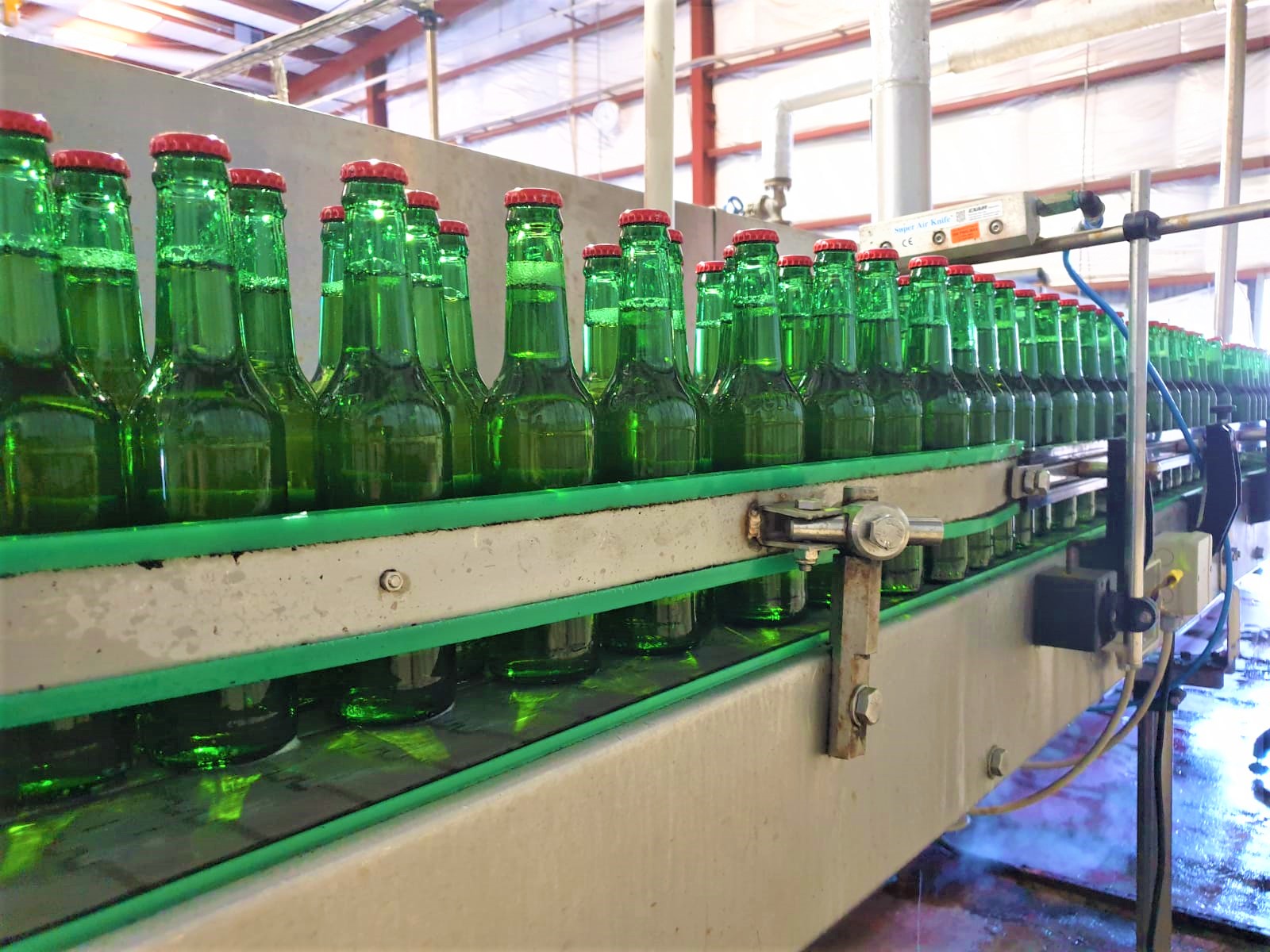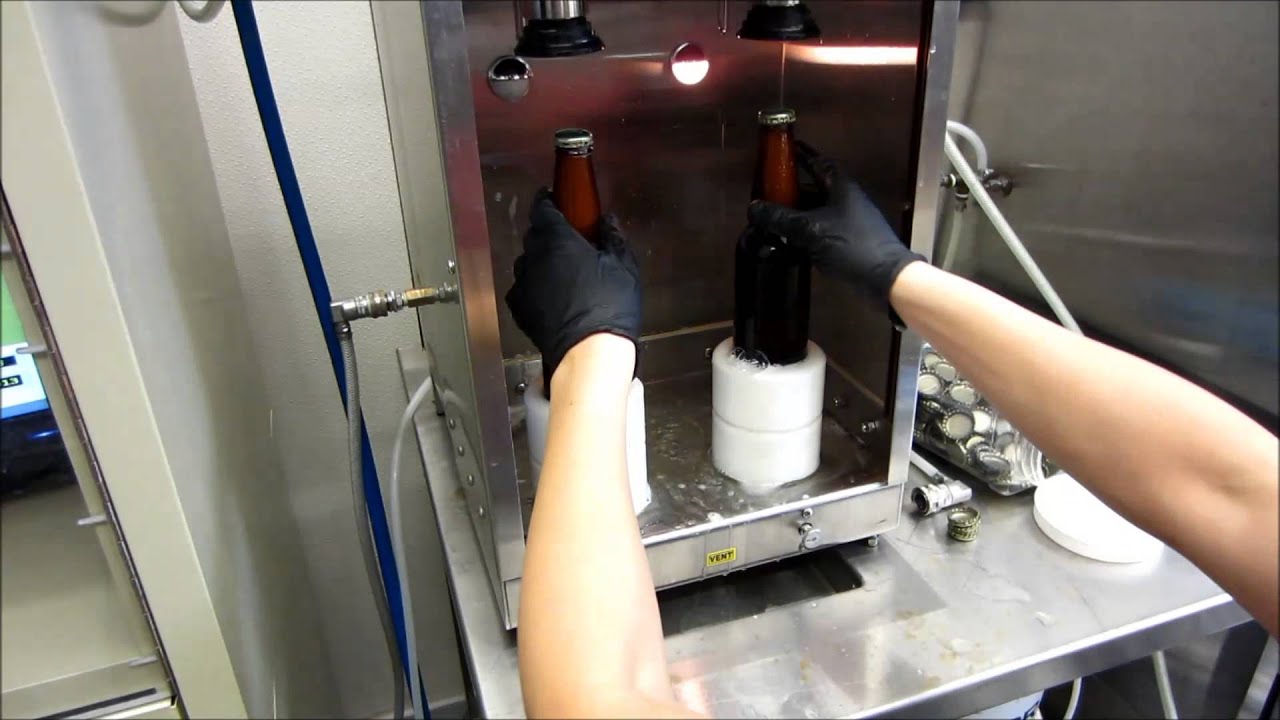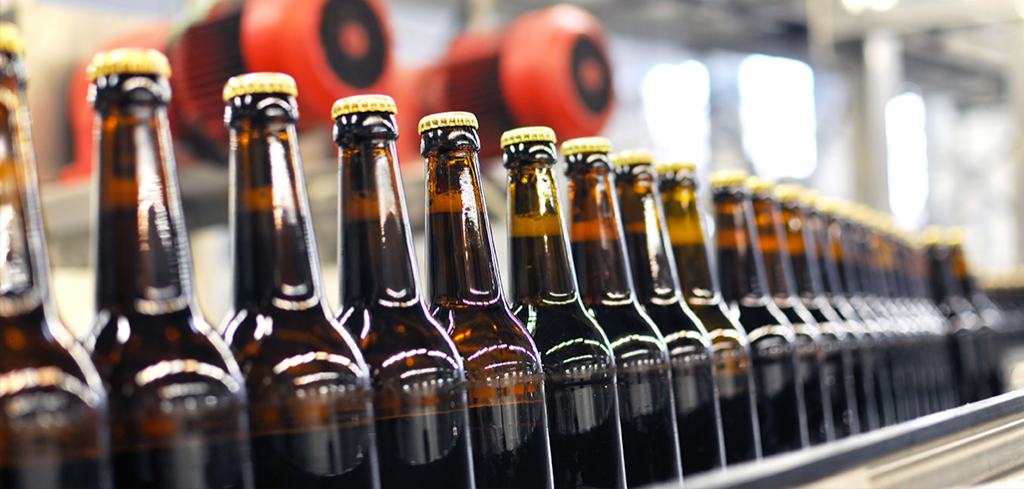Pasteurization Of Beer - The Use Of Non-Thermal Technologies
Beer is pasteurized by being heated to a temperature that will destroy any living microorganisms. For the pasteurization of beer, some brewers use it to sterilize and stabilize their product without altering the chemistry or flavor. Scientist Louis Pasteur came up with the word "pasteurization" when he used thermal pasteurization to keep beer fresh.
Author:Suleman ShahReviewer:Han JuDec 29, 202234 Shares471 Views

Beer is pasteurized by being heated to a temperature that will destroy any living microorganisms.
For the pasteurization of beer, some brewers use it to sterilize and stabilize their product without altering the chemistry or flavor.
Scientist Louis Pasteur came up with the word "pasteurization" when he used thermal pasteurization to keep beer fresh.
Alcoholic beverages like beer are made by fermenting sugar from malted cereal grains with yeast (e.g., barley and wheat).
The process of making beer has four steps: malting, which involves turning barley (or another cereal) into malt; mashing, which involves adding hops and boiling the malt to create wort; fermentation, which involves pitching yeast; and post-fermentation procedures.
The bitter flavor and natural preservation are attributes of the hops added during manufacture.
Beer's basic components—water, grain, hops, and yeast—can be blended in a variety of ways to produce a variety of beer types, including ales, lagers, stouts, pilsners, and more.
Why Is The Pasteurization Of Beer Important?
Louis Pasteur came up with the modern way to keep food from going bad, which has been used for hundreds of years.
Beginning his career in the French vineyards, Pasteur later turned his attention to beer.
His "Improvement in Brewing Beer and Ale Pasteurization," U.S. patent number 135,245, was authorized in 1873.
“„His discoveries are included in his thorough explanation: "I have discovered that through my novel technique, the beer produced possesses to an excellent degree the capability of unchangeability and can be carried without damage or deterioration."
It was groundbreaking when pasteurization was introduced to the brewing sector.
Beer went bad quickly, and there was a big chance of getting sick from packaged beer, so refrigeration was not common.

How to pasteurize craft beer?
Is Pasteurized Beer Any Good?
In Pasteur's time, sterilizing products for long-term storage, mass distribution, and consumption was undoubtedly a sensible idea.
Today's brewers sanitize their entire production and maintain high sanitary requirements.
Beer production and distribution no longer requires refrigeration.
Unpasteurized beer rarely spoils before reaching the customer.
Unpasteurized beers have a "burnt sugar" flavor, claim fans.
They think pasteurization and overfiltering damage beer's flavor.
These flavor alterations are suppositions without a side-by-side comparison of pasteurized and unpasteurized beer.
Beer and the yeast that remains after fermentation are alive.
Our modern civilization can greatly slow this transformation.
Pasteurizing beer isn't as important as it formerly was, unlike milk and other products.
If a brewer thinks the technique's protection is excellent for their beer, the flavor won't matter because it will become the beverage's profile.
A brewer who pasteurized today probably will next month, so consumers won't notice.
Conventional Thermal Pasteurization Effects On Beer Quality
Breweries regulate beer's appearance, aroma, flavor, mouth feel, strength, specific gravity, and alcohol concentration.
Light causes the lightstruck beers' off-flavor. Amber glass, bottles, or cans reduce this phenomenon.
During production, aging, and storage, beer's chemical composition changes, altering its flavor.
Microbrewery craft beers aren't pasteurized, so their original qualities are preserved.
Artisanal beer must be cold-stored and distributed.
Large-scale breweries employ thermal pasteurization most often.
As heat can affect beer quality, various research has examined the impact of thermal processes on beer quality.
Bernstein and Laufer found 2-furfural production during beer thermal pasteurization causes beer staling and freshness loss.
Polyphenolic chemicals affect beer's bitterness, sweetness, and mouthfeel.
Lima et al. found that thermal treatment affects the phenolic content of foods, which impacts beer's taste qualities.
Lund and Andersen found that unpasteurized beers had greater fruity flavor and fewer stalling volatile esters, suggesting that pasteurized beer has lower sensory acceptability.
Härnulv and Larsson evaluated the effects of thermal pasteurization and membrane filtration on Swedish lager beer quality.
They found that thermally pasteurized beers with high PU levels stalled more than filtered non-heated beer. Beer is a delicate beverage; pasteurization might cause off-flavors.
Regarding flavor, the brewing sector would welcome no-heat or low-heat pasteurization technology. Non-thermal beer pasteurization technologies are discussed.
The Impact Of High-Pressure Processing On Beer Quality
High-pressure processing (HPP) is a modern food processing invention. Pressures between 200–600 MPa can inactivate food germs.
This procedure preserves aroma, color, and vital food components while killing spoilage bacteria, yeasts, and molds in liquids (e.g., beer, wine, juices) or solid foods.
HPP technology is a breakthrough in food processing.
Commercial HPP food processing is growing.
Fischer et al. treated mash, wort, and pale lager beer with HPP at 300 and 700 MPa for 5 min in 2006.
As pressure increased, HPP-treated mash had more dissolved protein than untreated mash.
With increased pressure, fermentation decreased and pH remained unchanged.
For HPP-treated wort, bitterness increased more than after thermal treatment.
A 300 MPa HPP treatment for 5 minutes did not modify the pale lager beer's color, aromatic compounds, or foam stability, but a 700 MPa treatment increased the beer's haziness.
Castellari et al. compared pale ale and mild ale beers to thermally treated beer after 600 MPa treatment for 5 min.
Unlike thermal pasteurization, HPP didn't influence the color or haze of pale ale beer.
The HPP didn't affect the beer's key ingredients.
Pale ale stabilization affected permanent haze more than mild ale.
Pasteurization Using Pulsed Electric Fields And Its Effect On Beer Quality
Sale and Hamilton researched pulsed electric fields (PEF) in the 1960s.
Since 1990, PEF has been widely studied for water disinfection and food pasteurization.
PEF's low processing temperature and microsecond-long residence period inactivate microbes and preserve product quality.
PEF could replace or supplement thermal pasteurization by permeating biological tissue in microseconds.
As PEF may be adjusted to continuous mode, it can be applied to beer and wine.
A typical continuous PEF system has a pulse generator, a treatment chamber, a beverage handling system (pump, tube), and devices to control the temperature of the input and output, the strength of the electric field, the frequency and length of the pulses.
The biggest quality concern in breweries is an off-flavor that develops in light-exposed beer, called "lightstruck character."
The beer's skunky odor is caused by 3-methyl-2-butene-1-thiol and organic sulfur compounds.
The major rationale for storing beer in dark glasses or cans is to prevent or minimize light-struck.
Milani et al. compared nine PEF beers (45 kV/cm, 70 s) with a control beer that hadn't been treated and a beer that had been in the sun for 8 hours.
The sensory panel couldn't discern differences in scent and flavor between control, PEF, and lightstruck for Pilsner and dark ale beers, perhaps due to their dark hue.
The panel detected the lightstruck flavor/aroma in the other PEF-treated light lager beers.
To get rid of these and other bad tastes, it's important to choose the beer and set the PEF processing settings to their best.

Beer Bottling and Pasteurisation
The Impact Of Power Ultrasound Treatment On Beer Quality
Ultrasounds are sound waves with frequencies above human hearing (20–100 kilohertz, kHz).
Ultrasound waves are characterized by frequency and sound strength.
High-frequency ultrasound is used for food quality assessment, medical imaging, and non-destructive inspection.
Power ultrasound uses lower frequencies (20–100 kHz) and 10–1000 W/cm2 of sound (also called high intensity ultrasound).
Power ultrasound's high energy level makes it suitable for germ destruction and equipment disinfection in the food business.
Power ultrasound processing, called sonication, uses a liquid medium such as food or water containing food.
Ultrasound at 1 MHz modifies the alcohol/ester balance in wines, whiskeys, and spirits, simulating age.
The US enhances beer output and reduces fermentation time during the mashing process.
This method improves fermented items' flavor and maturity by increasing oxidation. It helps defobbing and defoaming before bottling.
In addition, Deng et al. found no significant changes in physicochemical and sensory parameters of Chinese lager beer subjected to US and thermosonication.
Acoustic power of 2.7 W/ml at 40, 50, and 60 °C for 2 minutes.
Higher acoustic power density (10.8 W/ml) and temperature (75°C) TS treatment for 20.5 s, corresponding to a 15 PU process, produced unacceptable haze in ale and lager beers.
Other Non-Thermal Technologies
Dense-Phase CO2
DPCD is a non-thermal method that preserves the nutritional value, freshness, and sensory aspects of food while inactivating spoilage microbes and enzymes using the carbon dioxide molecular effect at pressures below 50 MPa.
Fraser was the first scientist to show how different varieties of bacteria may be inactivated by gas pressure.
Unknown is the exact process by which DPCD inactivates microorganisms.
However, studies have shown that a number of processes, including protein and ion precipitation, inhibition of biological activities, and modifications to cell walls that result in cell rupture and the extraction of cellular components, which cause an imbalance in the intracellular electrolyte balance, can be involved in microbial inactivation.
There have been a few experiments done using DPCD pasteurization on various foods.
In addition to fruit juices, beer and other alcoholic drinks were also subject to DPCD.
Folkes looked at how DPCD affected the microbiological inactivation and sensory characteristics of beer and found no discernible change between beers that had been treated with DPCD and those that hadn't.
High-Pressure Homogenization
The pasteurization of food using high-pressure homogenization (HPH), another non-thermal method, is a hot topic of research.
In HPH, a continuous process, such as 200 m/s at 340 MPa, exposes the fluid meal to a forced pressure and rapid acceleration of the media in a thin gap.
The result is microbiological inactivation as a result of cavities, shear, and friction caused by an abrupt drop in pressure.
Franchi et al. looked into how HPH treatment affected beer quality metrics and the killing of microorganisms.
On Pilsner beer that had been laced with lactic acid bacteria, acetic bacteria, and yeast, he performed HPH therapy.
Lactobacillus delbrueckii was the most resistant bacteria.
It took 250 MPa for it to go through a 6 log decrease.
Ultraviolet Irradiation
Another cutting-edge method for pasteurizing food that is frequently employed instead of heat treatment is ultraviolet treatment.
UV irradiation is mostly used in the food industry to preserve milk, juices, and cider.
The time and dosages used are the primary UV-C processing variables.
According to Bintsis et al., the most effective wavelengths for pasteurization, known as UV-C, are between 200 and 280 nm.
By being exposed to radiation, viruses, bacteria, fungi, yeasts, and molds have their DNA damaged, which stops their ability to reproduce.
People Also Ask
What Is The Pasteurization Temperature For Beer?
The normal range for pasteurization temperatures is 162°F to 180°F, depending on the product and the yeasts used. The average hold length is 15 to 20 seconds, but it can last up to 60 seconds. The temperatures and hold times required to properly process your beer may already be known to you.
Why Do You Pasteurize Beer?
The quick answer is that pasteurization considerably extends the shelf lifeof beer while also guaranteeing its freshness. It's a matter of opinion, and there is some controversy about whether the method has a negative impact on flavor. Breweries use several different pasteurization techniques.
When Was Beer Pasteurized?
Prior to the 1870s, at the height of the Franco-Prussian War, all beers were pasteurized (or the War of 1870). Louis Pasteur, the inventor of pasteurization, aimed to improve the flavor of French beer.
How To Pasteurize Beer At Home?
It's easy to pasteurize beer at home. Water should be heated to a temperature of 76.5–82°C (170-180°F). Each beer's bottle was put into the pot with the water level being higher than the beer level. Additionally, put an open test beer in the pot so you can monitor the beer's temperature.
Conclusion
This article explored the benefits and drawbacks of cutting-edge non-thermal technologies in relation to beer quality.
The body of knowledge regarding various alcoholic beverages' non-thermal pasteurization is growing.
More research is required to assess the capital investment, operating expenses, energy consumption, and sustainability of various technologies.
Some of these technologies are still not widely accessible commercially.
More investigations at the pilot and industrial scales are required to clarify the industrial viability of the non-thermal methods.
Jump to
Why Is The Pasteurization Of Beer Important?
Is Pasteurized Beer Any Good?
Conventional Thermal Pasteurization Effects On Beer Quality
The Impact Of High-Pressure Processing On Beer Quality
Pasteurization Using Pulsed Electric Fields And Its Effect On Beer Quality
The Impact Of Power Ultrasound Treatment On Beer Quality
Other Non-Thermal Technologies
People Also Ask
Conclusion

Suleman Shah
Author
Suleman Shah is a researcher and freelance writer. As a researcher, he has worked with MNS University of Agriculture, Multan (Pakistan) and Texas A & M University (USA). He regularly writes science articles and blogs for science news website immersse.com and open access publishers OA Publishing London and Scientific Times. He loves to keep himself updated on scientific developments and convert these developments into everyday language to update the readers about the developments in the scientific era. His primary research focus is Plant sciences, and he contributed to this field by publishing his research in scientific journals and presenting his work at many Conferences.
Shah graduated from the University of Agriculture Faisalabad (Pakistan) and started his professional carrier with Jaffer Agro Services and later with the Agriculture Department of the Government of Pakistan. His research interest compelled and attracted him to proceed with his carrier in Plant sciences research. So, he started his Ph.D. in Soil Science at MNS University of Agriculture Multan (Pakistan). Later, he started working as a visiting scholar with Texas A&M University (USA).
Shah’s experience with big Open Excess publishers like Springers, Frontiers, MDPI, etc., testified to his belief in Open Access as a barrier-removing mechanism between researchers and the readers of their research. Shah believes that Open Access is revolutionizing the publication process and benefitting research in all fields.

Han Ju
Reviewer
Hello! I'm Han Ju, the heart behind World Wide Journals. My life is a unique tapestry woven from the threads of news, spirituality, and science, enriched by melodies from my guitar. Raised amidst tales of the ancient and the arcane, I developed a keen eye for the stories that truly matter. Through my work, I seek to bridge the seen with the unseen, marrying the rigor of science with the depth of spirituality.
Each article at World Wide Journals is a piece of this ongoing quest, blending analysis with personal reflection. Whether exploring quantum frontiers or strumming chords under the stars, my aim is to inspire and provoke thought, inviting you into a world where every discovery is a note in the grand symphony of existence.
Welcome aboard this journey of insight and exploration, where curiosity leads and music guides.
Latest Articles
Popular Articles
